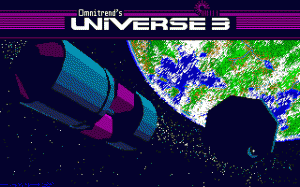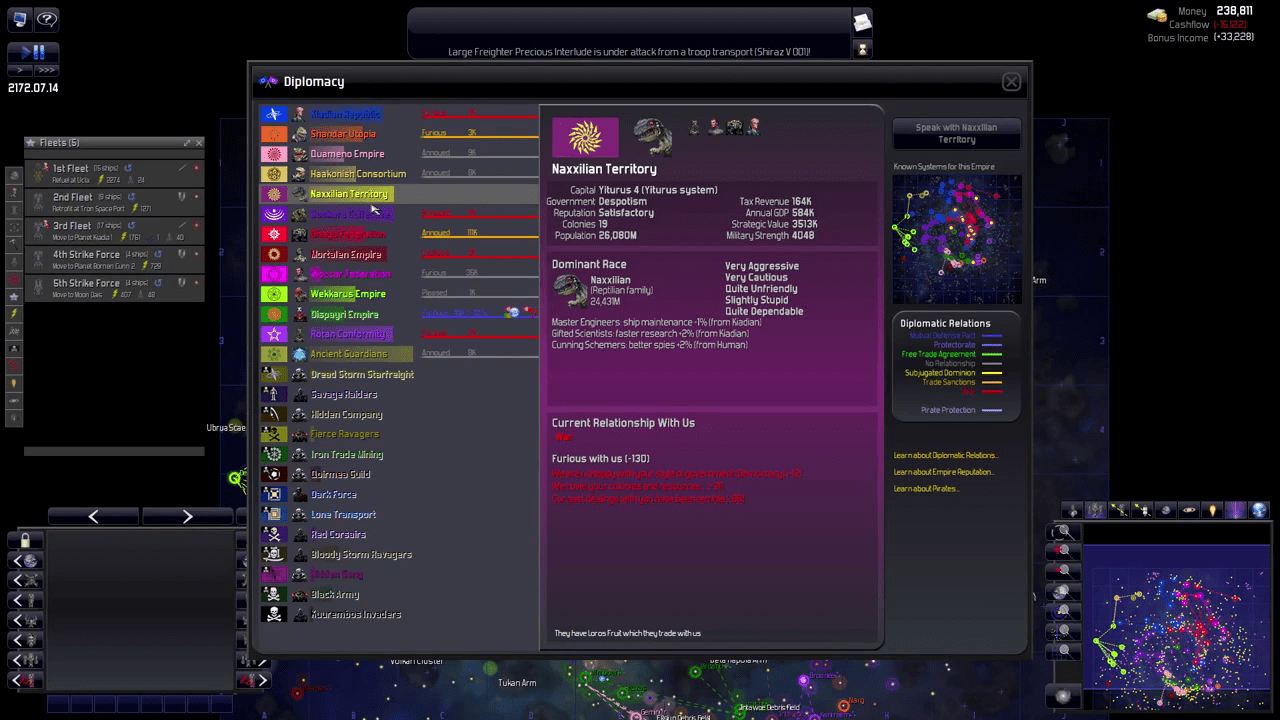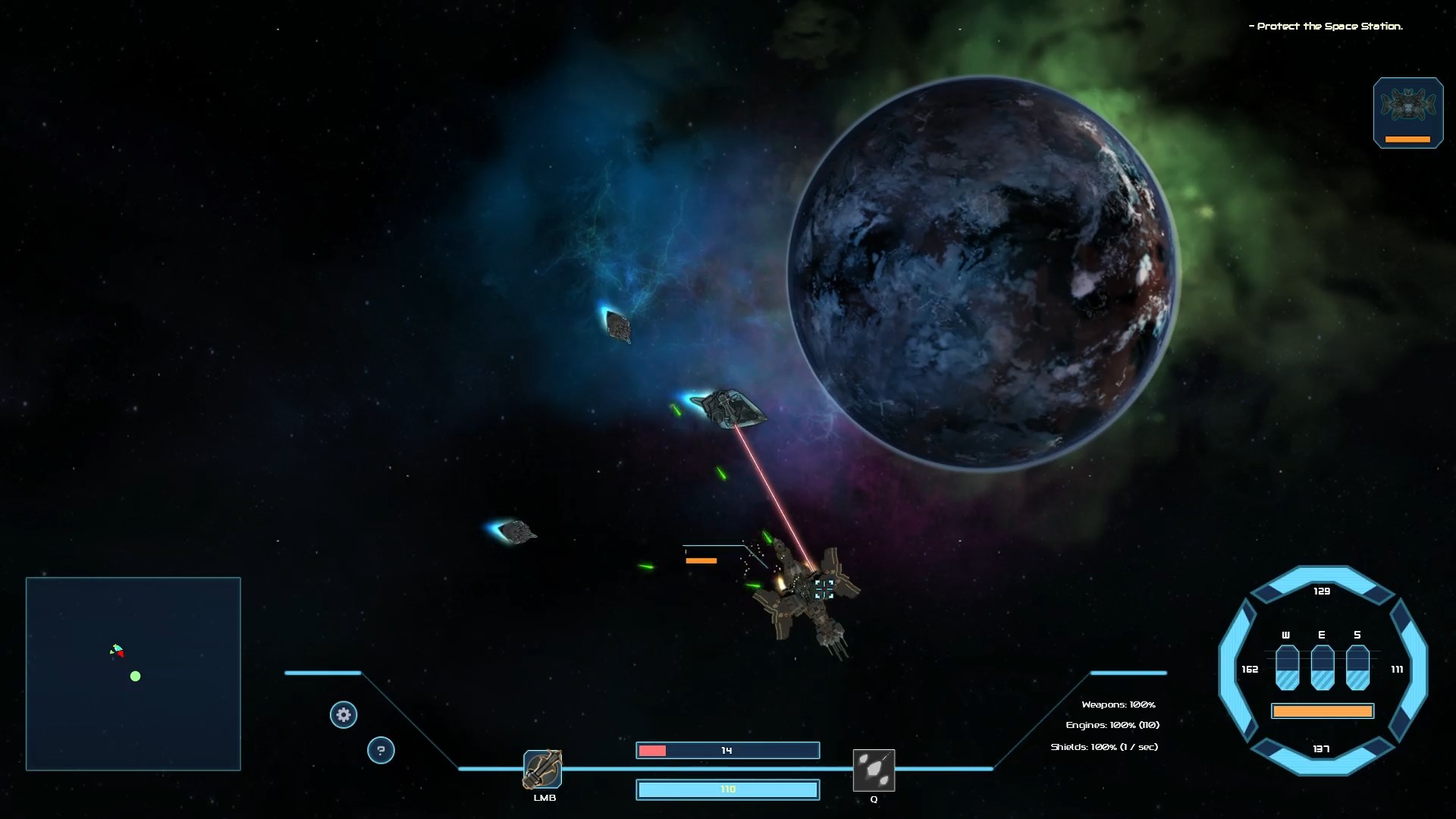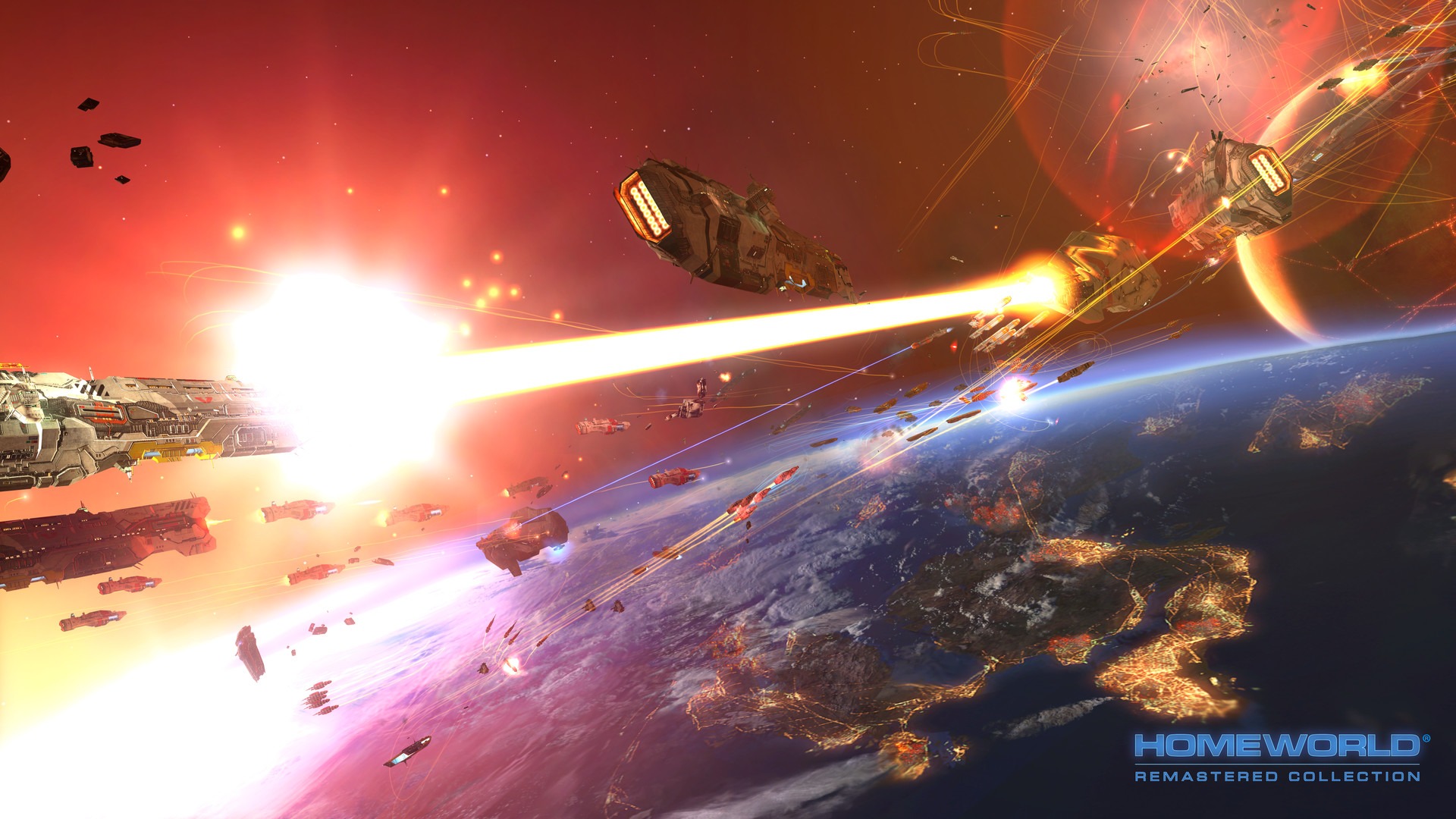
Well, you can imagine my delight when I finally got to sit down and talk to both Thomas and Maurice about both the Universe games and the Rules of Engagement games that they both worked on at Omnitrend. Below is the audio recording of that interview, at around an hour in length, and I hope y’all enjoy it. :)
Podcast: Play in new window | Download (Duration: 1:06:23 — 60.8MB)
Subscribe: Apple Podcasts | Spotify | Amazon Music | Android | RSS | More
Now, below the cut, Maurice provided a bunch of art from his days at Omnitrend, which I’m including in a gallery as more behind the scenes stuff that I hope y’all will enjoy. Thanks for visiting, and enjoy both the interview and the artwork. :)



































Would be great if you can also provide a download link for those of us listening to this kind of stuff when on the way to work or school.
Ohhh, sorry, good idea, lemme fix that!
Thanks! Never played the game but enjoyed listening to the podcast. Interesting and entertaining! :)
Thanks, so glad you’re enjoying it! :)
Too cool!
I know, rite?!
Awesome job, Brian. Your interviewing is getting better all the time. Your love for the source shows without getting in the way. Keep it up!
Thanks so much! :)
I only played ROE2, but I do remember those were the halcyon days when it seemed like anything was possible… interlocking games and products that were (supposedly/planned to) work together? The nostalgia is crushing me….
Yeah man, I miss those days too, big time.
Very cool interview! While I was more of a Breech fan, I put in a lot of time in the Captain’s chair as well. Good times. I’ve always been a fan of interlocking game systems such as FASA’s Renegade Legion games (capital ships, interceptors, grav tanks, and RPG.) I know that if there ever was a kickstarter for Breech/RoE/Universe I’d have to throw my money at it.
Glad you liked the interview, and I was the opposite, much more time in the captain’s chair. Never played the Renegade Legion games (just the stupid Renegade sim in the late 90s), but that sounds cool!
Jacob’s Star wasn’t too bad, well… at least back in the day. If it had caught on instead of Wing Commander, we’d have a different space fighter sim dynasty to make a cheesy movie about. “Look out, Space Romans!” :-)
Hahaha, yeah, it was okay, but compared to other releases of the day, it was meh. But hey, at least it wasn’t a Forced Alliance, amirite? ;)
Thanks for making it possible! It was so much fun to go hyperjumping down memory lane with Tom. Now you have to play Universe 1 & 2 so I can hear you interview Tom and Bill, and then you can do Breach 1 and Universe 3 and interview all three of us! Old home week!
Hey Maurice, welcome to the party! :) Thanks again so much for making this possible, too, ultimately, because if you’d never commented on my video in YouTube (how’d you find that anyway?), it never would’ve happened. It was also a TON of fun. I do eventually plan to play the Universe games, so Tom and Bill would be a fun interview. I’d also love to throw some Breach in there eventually. :)
Brain, I found your videos because I was at work and we somehow got talking about some of the earlier games I’d worked on so I Googled ROE2 and saw your videos. Your commentary got me laughing (“What’s hitting me?!”) so I had to reply.
Hahahaha, glad I got your laughing. :)
Maurice,
I wrote a couple of your ROE2 campaigns and set the type for the ROE2 manual.
Good to hear from you guys… : )
José López
San Juan, Puerto Rico
I played Universe 2. I believe, on my Lazer 128 Apple II clone… it was pretty cool, if I recall… wonder if GOGZ or someone might put it out…
That’s be cool, but it’d have to include the manual I think. It looks fairly complicated. ;)
Ohhell, GOG alwaysinludes manals!
I think that was also the game where an add-on game, Breach, wa used for oarding actions…
Breach 2 worked with Rules of Engagement, while Breach 3 worked with Rules of Engagement 2 using the Interlocking Game System, or IGS.
This was way before ROE2 and Breach 2…
Er, huh? Breach 1 didn’t work with anything. Universe 3 had a tactical system similar to Breach, according to Mobygames, but otherwise it’s as I said…
Huh… it’s been a while, so I suppose I could be misremembering… but I could have sworn it worked that way…
I can ask the lead dev to be sure if you’d like, because I only know what I’ve read on this. :)
Universe 3 has no tactical system. It’s really a point and click adventure game.
ROE 2 interlocks with Breach 2 and Breach 3.
ROE 1 interlocks with Breach 2.
Breach 1 interlocks with nothing.
Ohhhh, I misread MobyGames then. :) Thanks for the clarification! :)
Okay, I’m trying to remember which one it was… I think it was Universe 2? It was set in an area of space far from Earth, where a giant hyperspace booster had been used to propel settlers one-way. Another booster had been found in this far off corner of space, and it was being towed at sub-light speeds for a couple of decades to a world where it could be studied, and possibly be used to establish contact with earth.
We played the captain of a ship,and we did all the usual buying low and selling high on different worlds stuff… we could also play pirate, although I don’t think I ever started attacking other ships until I jumped in to one system and noticed a ship wasn’t in orbit but it was “maneuvering” and it was locked on to me… but I had a warship (an Odysseus?) and I wound up attacking him instead and boarding him.
Whichever game this was, it was what inspired me to get a second 5.25″ drive for my Apple IIe clone… it was way awesome…
That sounds like what I’ve read of 2, but I could be wrong. I can’t wait to play these. :)
This is pretty long, but you might find it interesting: It’s the review of ROE2 that appeared in Compute! and was written by OMNI editor Keith Ferrell:
ENTERTAINMENT CHOICE
Lead Fleets of starships in interstellar battles as you fight to save the Federated Worlds in this realistic space-opera simulation.
Keith Ferrell
RULES OF
ENGAGEMENT 2
Can software re-create science-fiction experiences? This is a question that’s been addressed by most of the major entertainment software publishers at one time or another. For some publishers, it’s the question. Omnitrend, for example, has devoted most of its energies over the past decade to creating interactive interpretations of a particular type of science-fiction, the space opera. Its latest game, Rules of Engagement 2, may well be the finest science-fiction simulation ever developed.
Space opera is one of the grand traditions of literary science-fiction. Like its antecedent, the horse opera, space opera works from several givens. Fleets of mighty starships substitute for the cavalry and the bad guys. Space operas are often set along frontiers, with colony worlds serving the roles played by prarie towns. Climactic battles are preceded by smaller confrontations, the stakes rising with each new conflict.
Rules of Engagement 2 may well be the finest science-fiction simulation ever developed.
Of course, horse operas are pretty much restructed to rifles, pistols, and the occasional Gatling gun, while the space opera can hurl whole solar systems into different continua. Crashing Suns, for instance, is the title of one of the earliest space operas.
At its best, space opera is more than just adventure fiction. Good space opera should be good science-fiction as well, taking place in a carefully designed and delineated universe that is self-consistent within the bounds of the story that contains it.
Space opera–or what passes for it–has played a large part in the interactive entertainment explosion. And that’s not suprising, as space opera has played perhaps the dominant role in all electronic media forms of science-fiction. “Star Trek” is essentially a space opera, and the Star Wars saga is little more than that. Interactive space opera has tended to follow the Star Wars pattern: lots of arcade action, speed, bells and whistles, and little attention toor reflection upon what actual interstellar combat might be like.
That sort of reflection and attention is exactly what Omnitrend has brought to its science-fiction simulations. Its simulations follow three separate, though interlocked, tracks, all set withing the same universe. One of the Omnitrend series, Universe, deals with interstellar exploration, trade, and settlement. Then there’s the Breach series, which focuses on ground-combat troops. And the third is the Rules of Engagement group, which puts players in charge of fleets of military starships.
All of the games take place in the same self-consistent universe, and a very strange and dangerous place that is. Like most good science-fiction universes, this one has a history. According to the Omnitrend scenario, over the next century the human race develops faster-than-light travel and begins the colonization of planets in our local galactic area. Human being a fractious species, factional differences develop, and humanity splits into two groups: the Federated Worlds (you) and the United Democratic Planets (them).
There are also aliens of various levels of malevolence and competence. And, in the best science-fiction tradition, there are remnants of an ancient and very advanced species. This is a remarkably well thought out universe, full of details that lend just enough credibility to suspend disbelief. As illusions go, the Omnitrend universe is quite convincing.
The command interface is a marvel… This thing feels like a starship command center.
Of the games set in this universe, Rules of Engagement 2 is by far the most ambitious. It’s a campaign-oriented game. You start out as a cadet and work your way up the ranks, facing larger challenges and commanding more powerful forces with each advancement. A beginner campaign is included, but you’ll quickly find yourself facing large combat and command challenges.
Command, not incidentally, figures largely in the game. In the more advanced scenarios, you’ll find yourself with whole fleets of ships at your disposal. It’s your responsibility to select individual ship commanders from the roster of those available. All the characters have their own traits, competencies, and vulnerabilities–any one of which can affect how they respond to your orders.
Once you embark upon a campaign, you’re in the center seat of the flagship, which can be a lowly transport traveling solo or a mighty dreadnought leading a fleet, depending upon the mission configuration. (Actual ship selection is up to you, but each scenario gives you only a certain number of configuration points to spend, which means that you can’t get the best ship every time.)
The command interface is a marvel: Not only is it effective and sensible, but it also has a design that serves to enhance the game’s illusion. This thing feels like a starship command center.
You’re presented with a variety of ship systems: tactical, navigational, communications, damage control, and docking. Within each system are subsystems specific to tasks at hand, such as selecting missiles for combat or loading and unloading cargo. Your monitor screen can be divided into command quadrants, with the quadrants displaying different systems or subsystems within a larger group. Tactical command, for example, gives you access to fire control, defensive shields, positioning relative to the enemy, and more. Included in communications are both transmission and reception. Navigation houses the helm, maps, and long-range sensors. You’ll learn quickly which arrangements work best in different situations.
Software space opera doesn’t get any better than this.
You’ll also learn–with luck, rapidly–to coordinate the systems during combat. Often, your enemies are better armed and equipped than you. The simulation gives you the tools necessary to crack each scenario, but it requires you to learn as you go; of course, that further enhances the game’s career advancement motif.
If you also play Omnitrend’s Breach series, you can interlock the games, moving from Rules of Engagement 2’s starship command to Breach’s ground-force command as you board and seek to capture enemy installations. The next release of Universe will also interlock with Rules of Engagement and Breach.
Documentation is extensive, thorough, and refreshingly well written. You’ll want to pay attention to the breakdown charts of ship and system capabilities; there’s information there that will affect your weapons selection and possibly turn the tide of desperate battles.
And the battles do get desperate. Systems can be damaged or knocked out; capabilities can be diminished. Allies respond in realtime, and the clock is always running. You may need full power in three minutes, to borrow a cliché from another space opera, but if the simulation runs six minutes before full power is available, you may be out of luck. There are no TV space opera miracle workers here.
Rules of Engagement 2 is a high-level simulation that demands good equipment. It will run on a slow 80386, but a faster machine makes it sing. (Actually, it talks, if you have sound support.)
Scenario design has become an important pastime for Omnitrend fans, and with Rules of Engagement 2, the company has gone so far as to prepare a special developer’s kit, which you can purchase directly from Omnitrend. Additional scenarios for the game are already popping up on bulletin boards and online services.
Rules of Engagement 2 is a serious simulation and a masterpiece of interactive science-fiction. Software space opera doesn’t get any better than this. It’s a game–and a vision of the space-operatic future–that would do Poul Anderson, Jack Williamson, or E. E. Smith proud.
Oops, I cut and paste that so a few quote that had been pulled out and boldfaced ended up mixed into the text, which explains why you see a couple of repeated statements.
No worries man, this is AWESOME.
I just pulled out my old Omnitrend folder…it’s over an inch thick and full of all kinds of crap, from faxes to sketches to gag documents. One fax even has MOO written at the bottom of a page. I just yanked a random page out and here’s what it says on the first line:
“Should I use the wench in place of repair guy? Or make her a wall?”
Clearly, this is in reference to Paladin.
On the flip side is a little 2″ wide pencil thumbnail for the Breach title screen.
Man, that sounds like such a treasure trove of awesome. :)
When can we expect this ROE2 adapted for mobile devices? This game seems perfectly suited for a tablet. I’d pay 5 bucks for it!
Great interview. I really loved this game back in the day. I loved hearing about how it was developed. Thanks for posting the interview.
Hey Jeff, welcome to the comments, and I’m glad you liked the interview. :) I too would love to see this on a tablet. :)